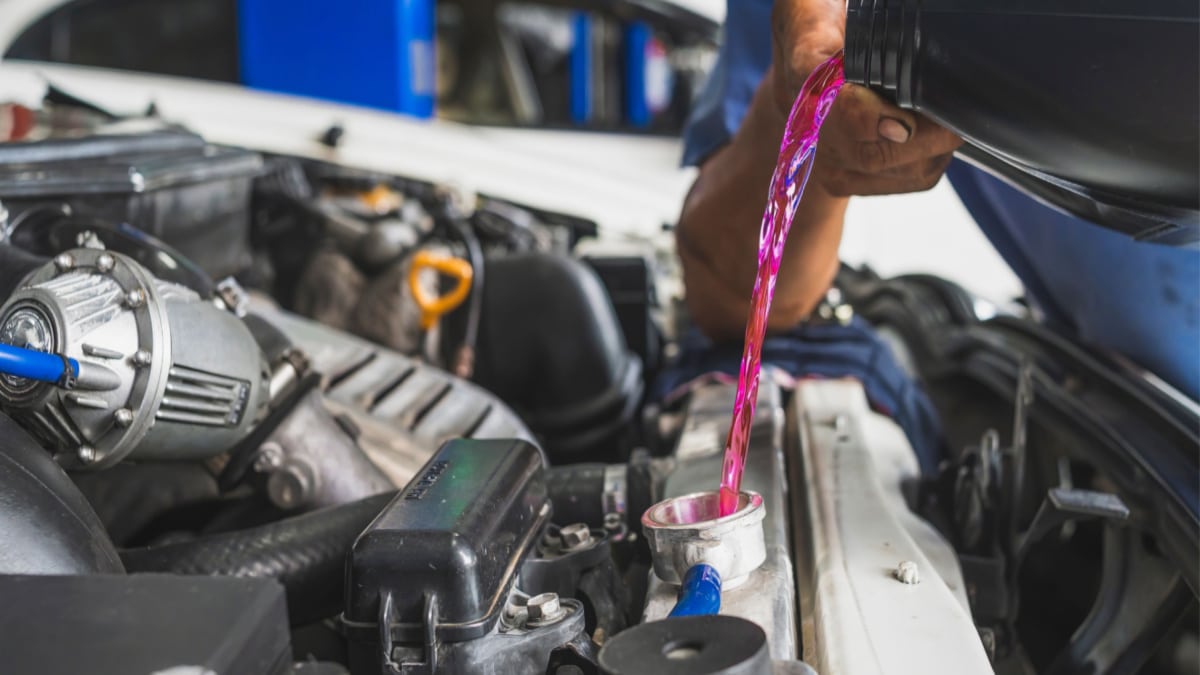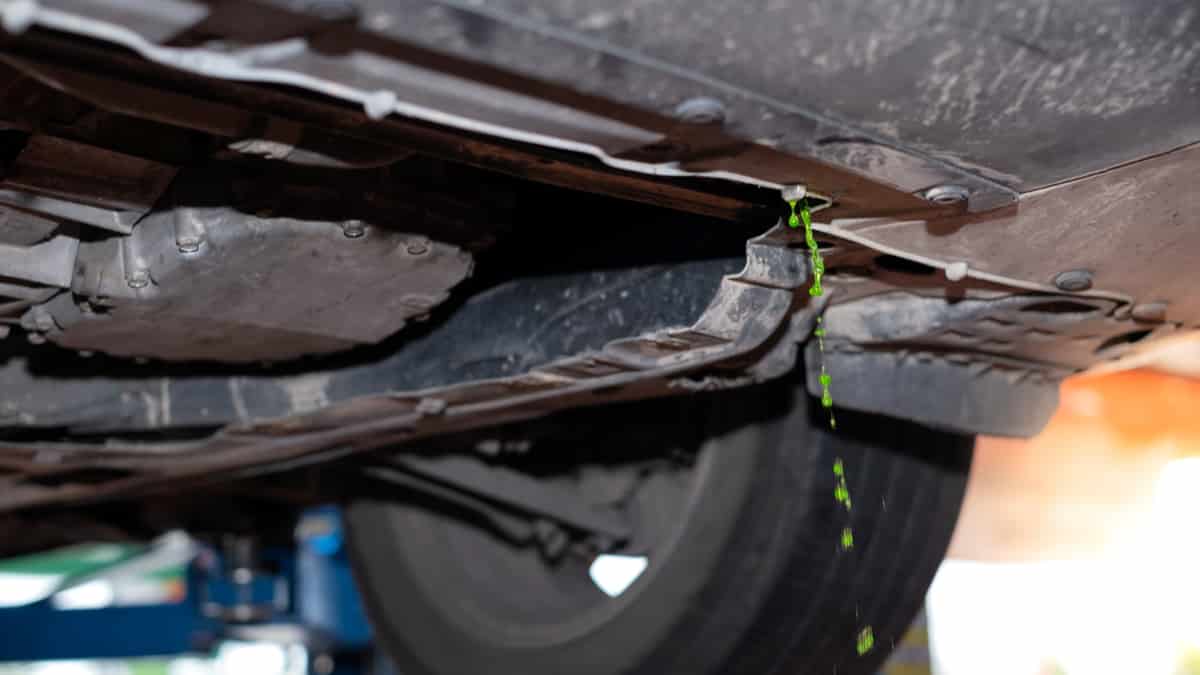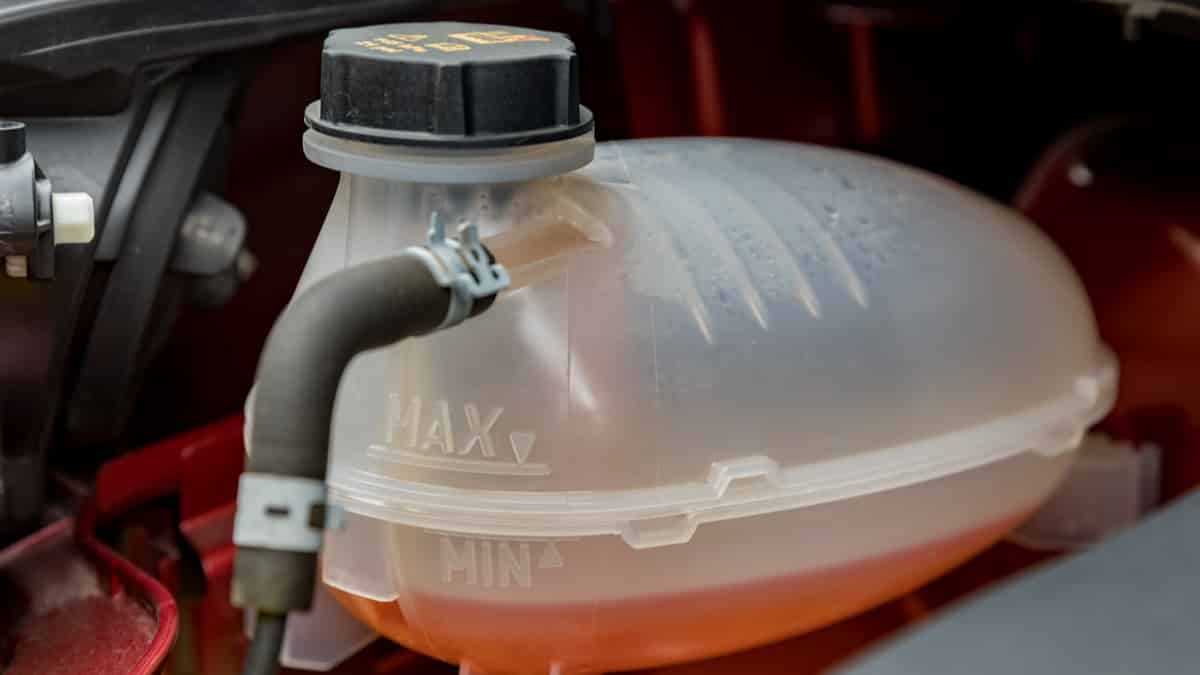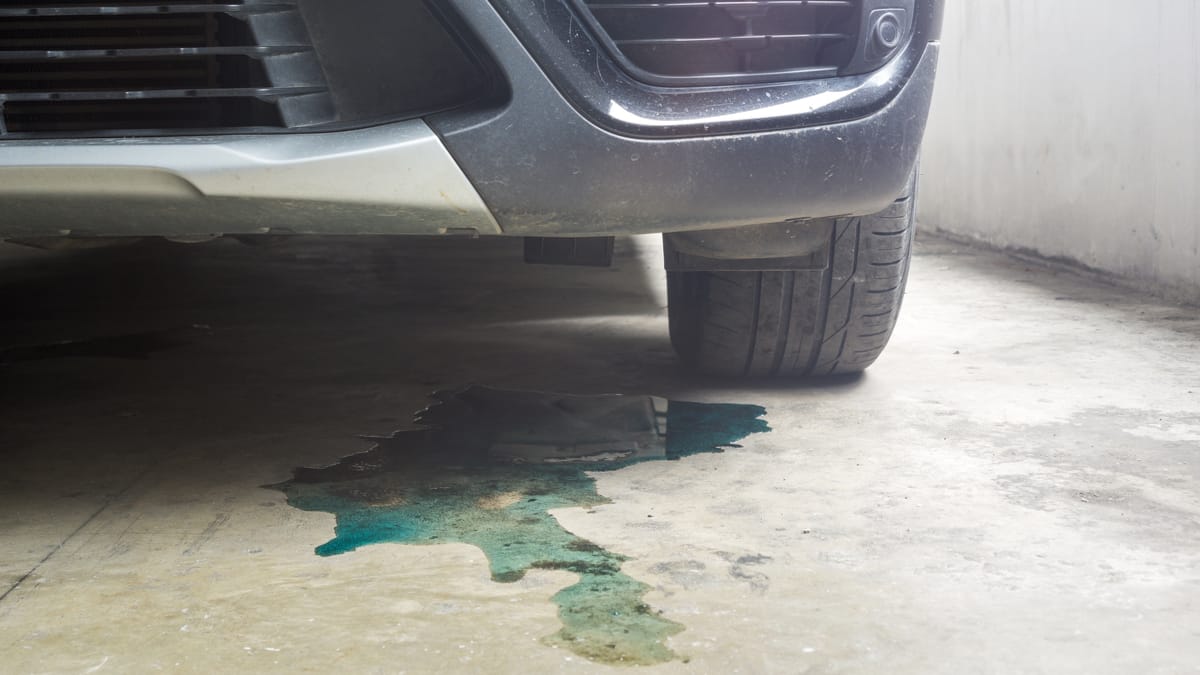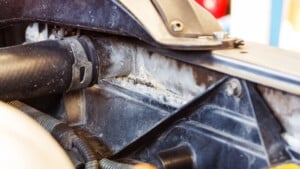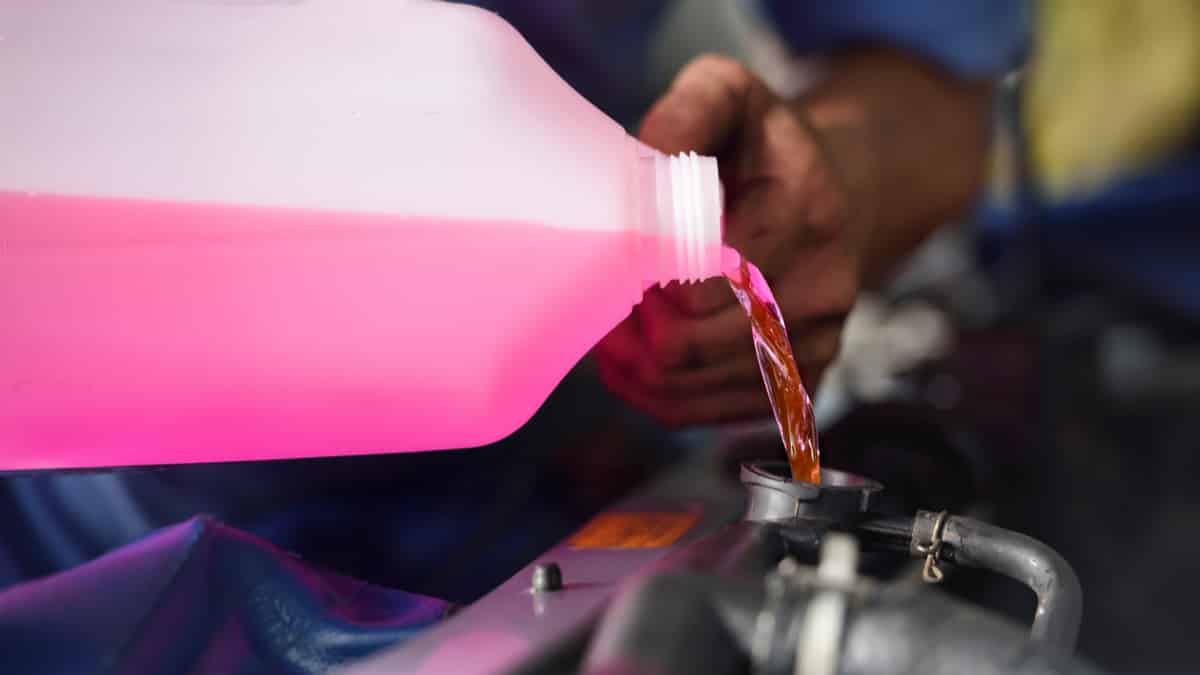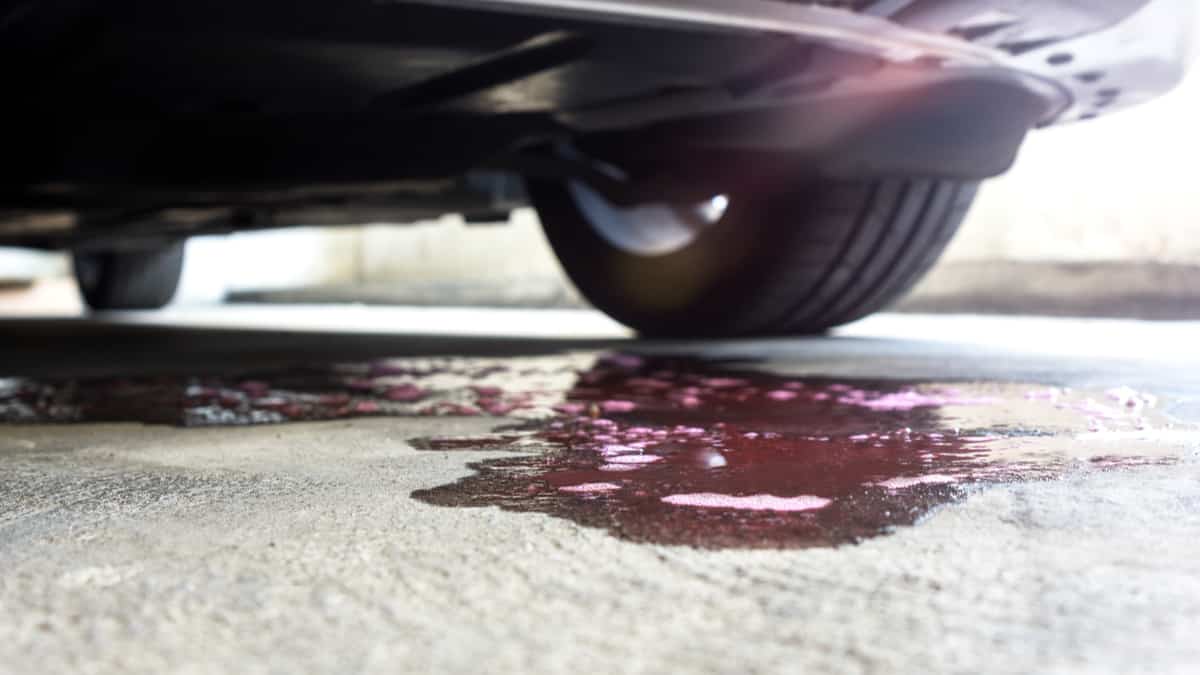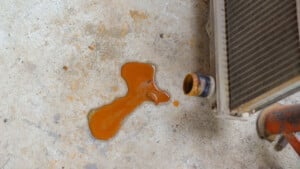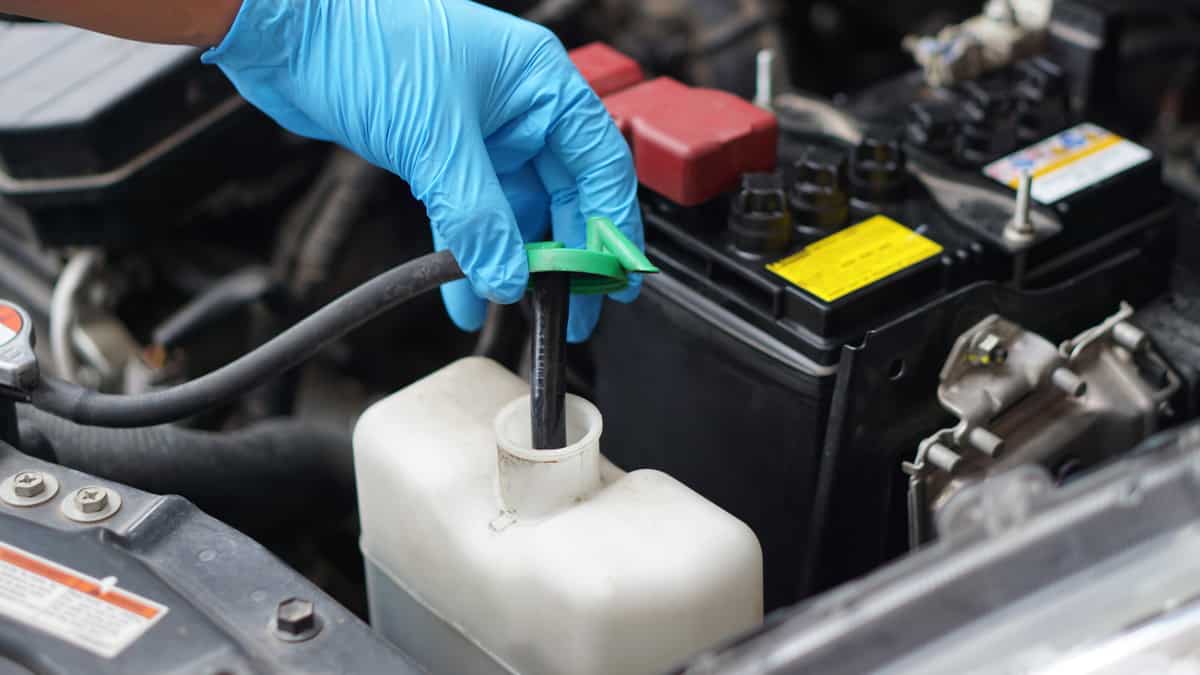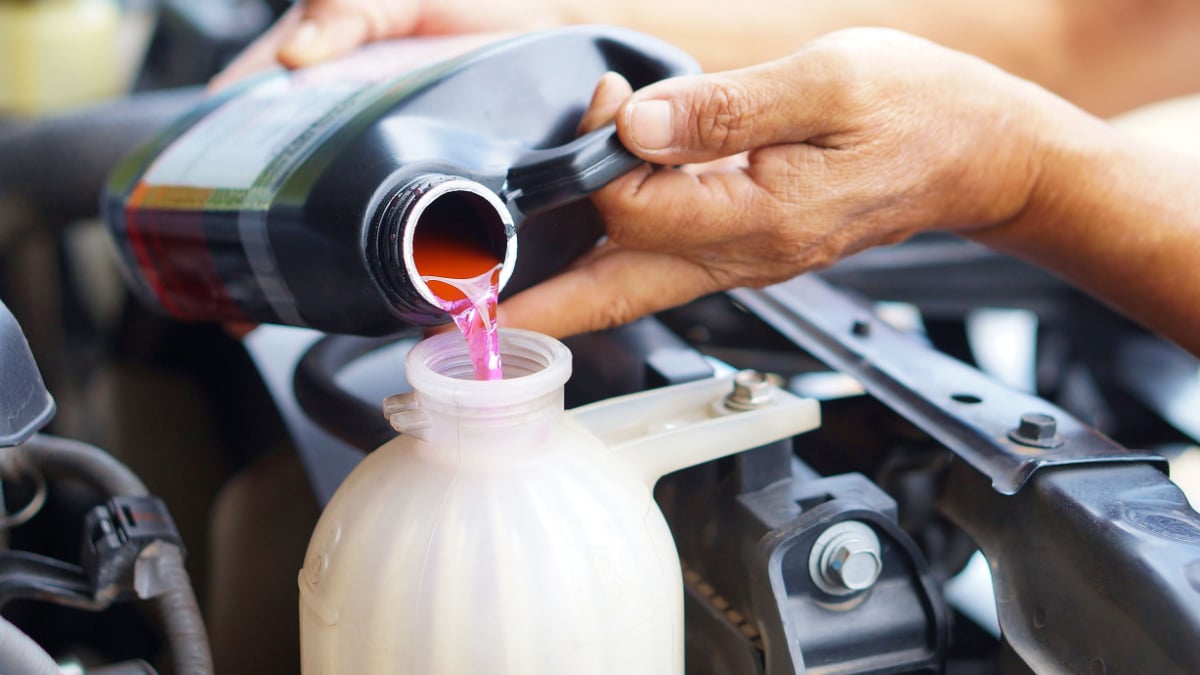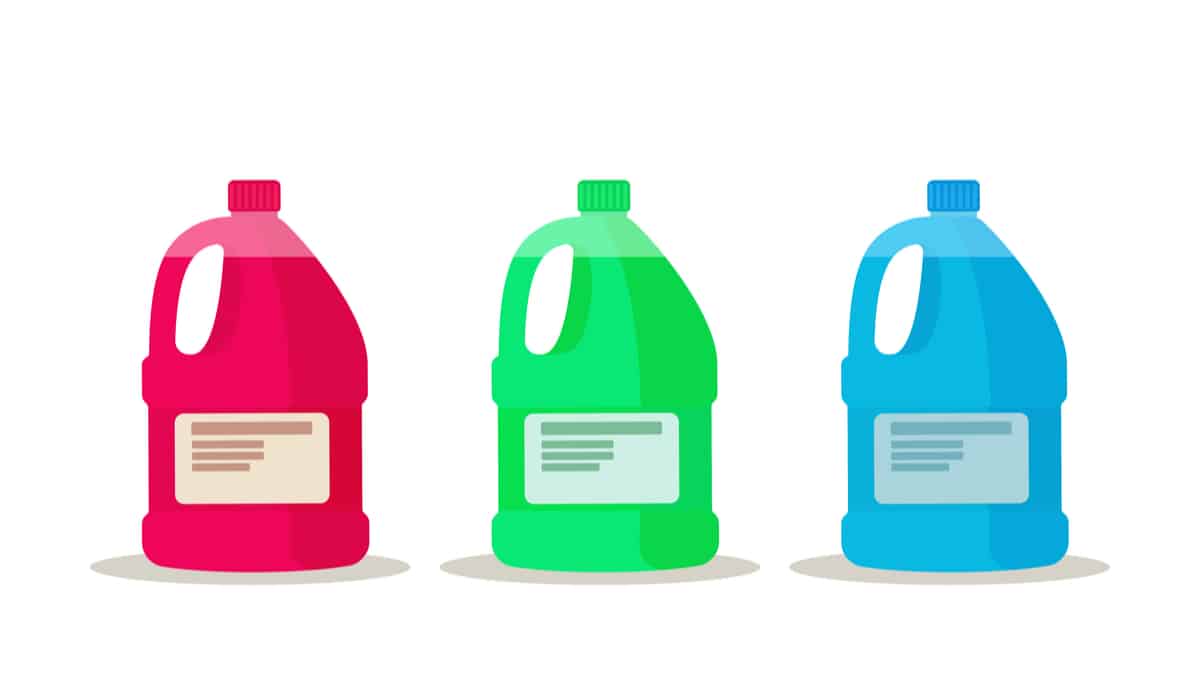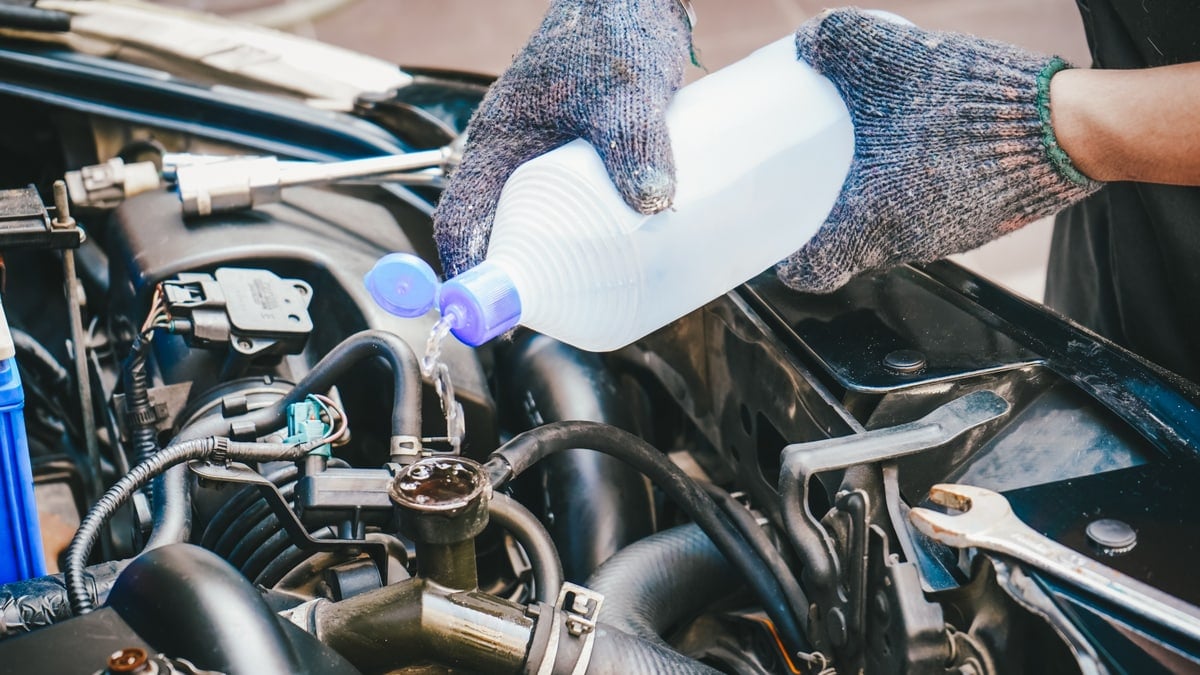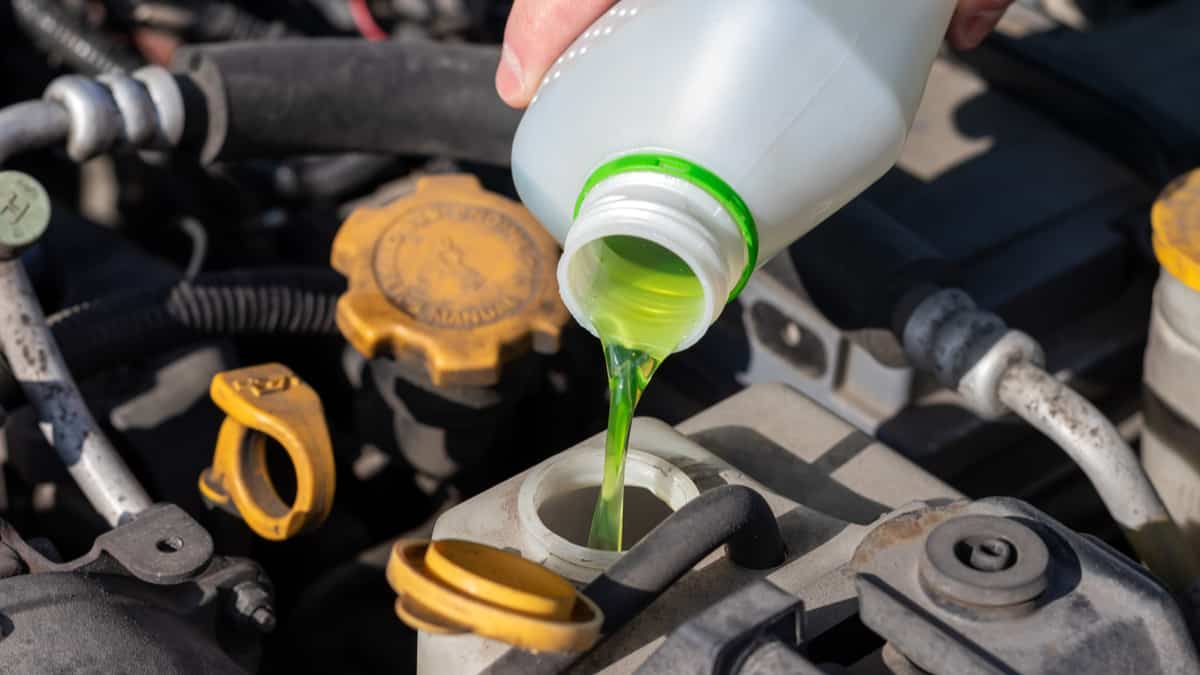Coolant is an essential fluid for regular car operation. When the time comes to top off the system or perform a flush, you want to know – how much coolant does a car hold?
The amount of coolant used in a car depends solely on what type of vehicle it is. Most vehicles hold between one and three gallons of coolant, but it can be more, especially with a full-size truck or SUV. Check the owner’s manual to determine the appropriate amount for your vehicle.
In this guide, I define what engine coolant is and show you its purpose. I also discuss how to top off the system, evaluate the three main types of coolant and show you how this fluid differs from antifreeze.
What is Engine Coolant?
Your car’s engine coolant is the fluid that moves through the cooling system to remove heat and ensure the motor works at normal temperatures. Considering your car engine can see temperatures of more than 200 degrees Fahrenheit, this is no easy job.
The fluid gets pumped into the engine from the radiator. Here, it takes on the heat coming from the motor and cools back down as it moves through the system. Once the fluid is cooled back down, it can circulate through the engine once again to dissipate more heat.
Function of Coolant
There are many purposes for having high-quality coolant in your cooling system. Here are the three main purposes of this fluid.
- Removes heat from the motor and raises the boiling point of the fluid higher than what’s normal.
- Reduces the freezing of the liquid when temperatures go below 32 degrees Fahrenheit by lowing the freezing point so the engine block doesn’t crack and break.
- Prevents corrosion to the heater core, radiator and engine.
Coolant might not be discussed as much as engine oil, but it’s just as important as an automotive fluid. Without the right amount of fluid in the system, engine failure can occur.
RELATED: 10 Best Engine Coolants & Antifreeze – Review & Buyer’s Guide
How to Top Off Engine Coolant
1. Park Car
Before you can work with the coolant in your engine, the car must be cooled off. Hot coolant is dangerous and can lead to serious injury.
Park your vehicle on a flat surface. If you were driving, the car should sit for at least an hour or two until the motor has cooled down.
READ MORE: How to Add Antifreeze To Your Car (7 Steps)
2. Locate Reservoir
You need to find the appropriate location to fill the coolant levels. You can look in the owner’s manual for more directions for your particular car model.
You are looking for a clear, plastic container that has a bright-colored liquid inside. Within this reservoir, you will see a MIN and MAX line, showing how full it is. If the coolant is below the MIN line, you need to add more fluid.
3. Mix Coolant
You might need to mix the coolant before using it. You can also purchase pre-mixed coolant to make it easier, but these formulas are often more expensive in the long run.
To mix up the coolant, follow all of the instructions on the packaging. Also, it’s very important that you use the right coolant type for your vehicle. If you are topping off the coolant, fill the system with the same fluid that is already inside. Otherwise, a bad chemical reaction can occur from mixing two various formulations.
If you aren’t sure what the differences are between coolant types, I will discuss that more in a minute. I also help you understand the difference between antifreeze and coolant if you need more direction.
RELATED: Can you Mix Different Types of Coolant? (Which Types?)
4. Fill to MAX Line
Carefully pour your mixed coolant into the reservoir. Pay close attention to where the MAX line is.
Once the coolant reaches the MAX line, you want to stop filling. You can wipe up any spills and close the reservoir. You should be good to go.
3 Coolant Types
1. IAT
This is one of the older formulations of coolant. You won’t find this type used in modern cars today, because there are options that are more effective. IAT stands for inorganic additive technology and is slowly being phased out.
If you drive an older vehicle that uses IAT coolant, you need to flush the system more often than most. On average, it should be replaced every two years or 24,000 miles, whichever comes first. Otherwise, your cooling system is at risk of failure.
2. OAT
From 2000 and newer vehicles, the OAT coolant is much more common. OAT stands for organic acid technology and it is mainly used by GM vehicles.
With this coolant, you can go much longer between changes. On average, it shouldn’t need to be changed until your car hits 150,000 miles or five years lapse, whichever comes first. With such a wider interval, you save a lot of money and avoid regular maintenance.
Most OAT coolants are colored either red or orange. With the fully neutralized acids, the fluid is completely anti-corrosive for maximum protection.
3. HOAT
There’s also the option to use HOAT coolant. HOAT stands for Hybrid Organic Acid Technology.
It’s most comparable to the OAT coolant that we previously discussed, so it has a replacement cycle that is similar. However, HOAT coolant can come in a variety of colors, including yellow or turquoise, depending on the formulation.
READ MORE: What is HOAT Coolant? – Function & Difference vs OAT
Coolant vs. Antifreeze
If you are around the automotive world for any amount of time, you’ll hear the words antifreeze and coolant used interchangeably, even though they are quite different. These are not the same formulations and shouldn’t be used in place of one another.
Engine coolant is the fluid that circulates through the engine to keep it at appropriate temperatures. Coolant is a solution that’s designed by mixing several other substances together. The pre-mixed coolant contains antifreeze. You can also purchase antifreeze as a concentrated formula and mix it with water to make your own coolant. However, this shouldn’t be done by anyone that isn’t experienced.
Antifreeze is a chemical-based liquid. It’s made from ethylene glycol, which is also found in the pre-mixed coolant formulations that you put in your vehicle. If you choose to purchase it straight, you must mix it with the appropriate water type and amount. Only after the composition is correct should you funnel it into the cooling system of your vehicle.
Basically, you have two options. You can purchase the pre-mixed solution, which is known as coolant. This formula is going to cost you more because it has water mixed into it, but it’s the easiest option to use if you aren’t experienced. Otherwise, you would choose a bottle of antifreeze and mix it equally with water to create your own coolant. Of course, you should always read the labels on the product and follow all of the directions as they can vary based on the brand you purchase.
Either way, the antifreeze and coolant formulations are both toxic. You should keep all bottles away from pets and kids. The liquid can have a sweet flavor, making it desirable to the vulnerable. Additionally, it’s important to dispose of old coolant and antifreeze properly.
How much coolant does a car need in Litres?
Most cars need between 3 and 7 liters of coolant, but it depends on the make and model of the car, as well as the cooling system type. However, check your car’s owner’s manual or consult with a mechanic to be sure.
Is it OK to add new coolant without draining the old?
Yes. You can add fresh coolant to your car’s radiator without necessarily draining the old stuff first. However, it’s generally a good idea to flush and replace your coolant every few years to prevent rust, corrosion, and other buildup that can clog up your cooling system and diminish its overall performance.
Can you overfill coolant?
Yes. You can overfill coolant. It happens more often than you might think, especially with newer cars that have smaller reservoirs. If you overfill the coolant reservoir, it will push coolant out of the reservoir and you may see white smoke coming from the reservoir while driving.
How much coolant does it take to fill a radiator?
This will vary depending on the size of your radiator, but typically you’ll need between 1 and 2 gallons of coolant after a radiator replacement. To just fill the radiator, it requires less. Always check your owner’s manual for specific instructions on how to add coolant to your particular vehicle.
Categories: Coolant
